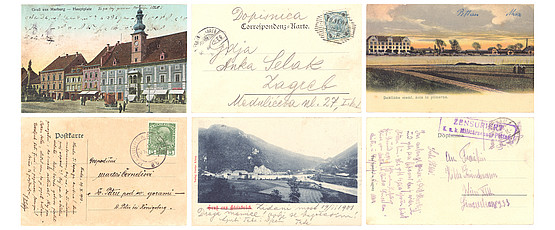Postcarding Lower Styria
Lower Styria, the southern part of the crownland of Styria, was pervaded by questions of nationality within the same timeframe that postcards became a popular medium of mass communication in the decades leading up to World War I. The project thus aims to explore the impact of postcards in shaping perceptions of this region, which was strongly determined by bilingualism. Whereas Lower Styria had been characterized by the peaceful, although asymmetrical coexistence of German and Slovene well into the second half of the 19th century, the last decades within the Habsburg monarchy were shaped by the formation of nationalist movements and the national mobilization of the masses. Language was no longer a mere means of communication, but also an emblem of one’s national affiliation and identity. Nevertheless, Styrians of Slovene and German mother tongue continued to live together in that shared territory and continued to communicate with each other on an everyday basis. They were no hermetically sealed ethno-linguistic groups that were at odds with each other, as national historiographies claimed later on.
One central concept of this research project is that postcards as a historical source of information can help tell a different story than this traditional national narrative. As a mass medium close to everyday life, postcards are a vital source of information about language contact, the prevailing, although asymmetrical bilingualism, and the coexistence of Slovenes and Germans in Lower Styria. The predominant topographical views of places, regions or tourist attractions were framed mainly with German, but also with Slovene or bilingual inscriptions by various producers and personalized with handwritten elements by their individual senders. In that sense, postcards served as a ‘stage’ on which claims to the shared territory could be presented visually and textually. Hence traces of language and “national” conflict are evident at the same time as traces of bilingualism and everyday coexistence. Postcards thus constitute an opportunity to portray a “linguistic landscape” (Landry/Bourghis) of the region, providing important information about the relative power and status of the competing languages.


